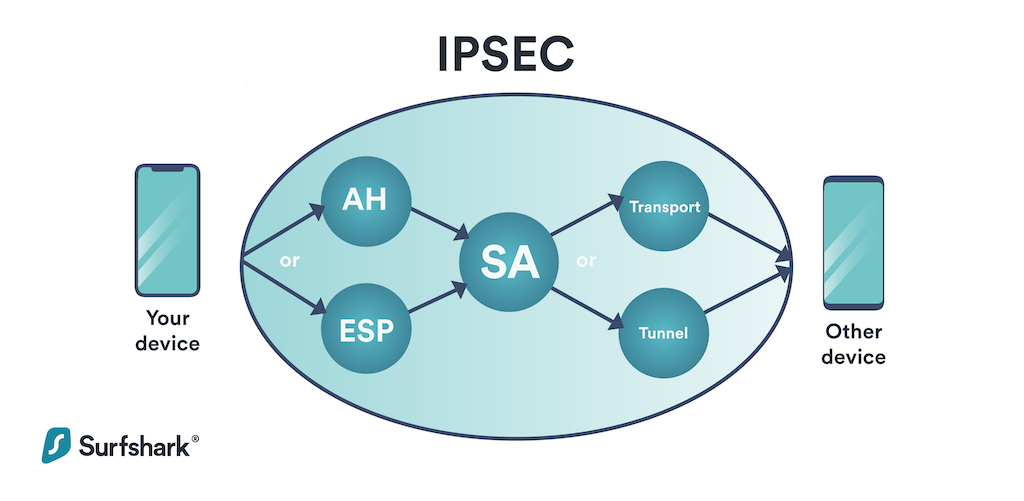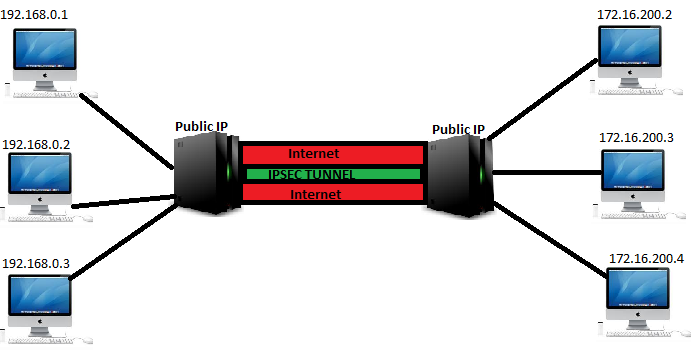Featured
Table of Contents
What Is Ipsec Vpn? How Does Ipsec Work In 2023?
IPsec confirms and secures information packets sent out over both IPv4- and IPv6-based networks. IPsec protocol headers are found in the IP header of a packet and define how the data in a packet is managed, including its routing and shipment across a network. IPsec adds several elements to the IP header, including security information and one or more cryptographic algorithms.

ISAKMP is defined as part of the IKE procedure and RFC 7296. It is a structure for crucial facility, authentication and negotiation of an SA for a secure exchange of packets at the IP layer. In other words, ISAKMP specifies the security criteria for how two systems, or hosts, interact with each other.
They are as follows: The IPsec procedure starts when a host system recognizes that a package requires defense and needs to be sent using IPsec policies. Such packets are thought about "fascinating traffic" for IPsec purposes, and they set off the security policies. For outbound packets, this suggests the suitable encryption and authentication are used.
What Is Ip Security (Ipsec), Tacacs And Aaa ...
In the second step, the hosts use IPsec to negotiate the set of policies they will use for a protected circuit. They likewise validate themselves to each other and set up a safe channel between them that is used to negotiate the way the IPsec circuit will secure or confirm data sent out throughout it.

A VPN essentially is a personal network executed over a public network. VPNs are commonly utilized in organizations to enable workers to access their corporate network from another location.
Generally utilized in between guaranteed network entrances, IPsec tunnel mode makes it possible for hosts behind one of the entrances to communicate firmly with hosts behind the other entrance. For instance, any users of systems in a business branch office can securely connect with any systems in the main workplace if the branch office and primary office have safe gateways to function as IPsec proxies for hosts within the respective workplaces.
What Is Ipsec?
IPsec transportation mode is used in cases where one host requires to communicate with another host. The 2 hosts work out the IPsec circuit straight with each other, and the circuit is typically torn down after the session is total.
With an IPsec VPN, IP packages are protected as they travel to and from the IPsec entrance at the edge of a private network and remote hosts and networks. An SSL VPN secures traffic as it moves in between remote users and an SSL gateway. IPsec VPNs support all IP-based applications, while SSL VPNs just support browser-based applications, though they can support other applications with customized advancement.
See what is finest for your company and where one type works best over the other.
Ipsec And Ike
Each IPsec endpoint validates the identity of the other endpoint it desires to communicate with, ensuring that network traffic and data are just sent out to the desired and allowed endpoint. In spite of its excellent energy, IPsec has a couple of problems worth discussing. First, direct end-to-end interaction (i. e., transmission approach) is not always available.
The adoption of numerous local security regulations in large-scale dispersed systems or inter-domain settings may pose extreme problems for end-to-end communication. In this example, presume that FW1 requires to check traffic content to find invasions and that a policy is set at FW1 to reject all encrypted traffic so as to enforce its content assessment requirements.
Users who use VPNs to from another location access a private company network are put on the network itself, providing the exact same rights and operational abilities as a user who is connecting from within that network. An IPsec-based VPN may be developed in a range of ways, depending upon the requirements of the user.
What An Ipsec Vpn Is, And How It Works
Since these elements might stem from various suppliers, interoperability is a must. IPsec VPNs allow smooth access to enterprise network resources, and users do not always need to utilize web access (gain access to can be non-web); it is for that reason a solution for applications that require to automate interaction in both ways.
Its structure can support today's cryptographic algorithms as well as more effective algorithms as they appear in the future. IPsec is a compulsory component of Web Protocol Version 6 (IPv6), which companies are actively releasing within their networks, and is highly advised for Internet Protocol Version 4 (IPv4) applications.
It supplies a transparent end-to-end safe channel for upper-layer procedures, and executions do not need modifications to those procedures or to applications. While having some disadvantages associated with its complexity, it is a fully grown procedure suite that supports a range of encryption and hashing algorithms and is highly scalable and interoperable.
Ipsec: The Complete Guide To How It Works ...
Like VPNs, there are many ways a No Trust design can be carried out, however options like Twingate make the procedure considerably easier than having to wrangle an IPsec VPN. Contact Twingate today for more information.

IPsec isn't the most common internet security protocol you'll use today, however it still has a crucial function to play in securing internet interactions. If you're utilizing IPsec today, it's probably in the context of a virtual private network, or VPN. As its name implies, a VPN develops a network connection between two makers over the general public internet that's as safe (or nearly as protected) as a connection within a personal internal network: most likely a VPN's a lot of popular use case is to enable remote employees to gain access to protected files behind a corporate firewall program as if they were working in the office.
For the majority of this article, when we say VPN, we imply an IPsec VPN, and over the next a number of areas, we'll discuss how they work. A note on: If you're looking to set up your firewall to allow an IPsec VPN connection, make certain to open UDP port 500 and IP ports 50 and 51.
Understanding Vpn Ipsec Tunnel Mode And ...

Once this has all been set, the transport layer hands off the data to the network layer, which is mainly managed by code running on the routers and other components that comprise a network. These routers decide on the path individual network packets take to their location, however the transportation layer code at either end of the communication chain does not require to know those information.
On its own, IP doesn't have any integrated security, which, as we noted, is why IPsec was established. Today, TLS is developed into practically all browsers and other internet-connected applications, and is more than sufficient defense for daily internet use.
That's why an IPsec VPN can add another layer of defense: it involves protecting the packets themselves. An IPsec VPN connection starts with facility of a Security Association (SA) between two interacting computer systems, or hosts. In basic, this involves the exchange of cryptographic keys that will permit the celebrations to secure and decrypt their communication.
Latest Posts
The 5 Best Business Vpn To Secure Your Team In 2023
The Best Free Vpn For Android
How To Troubleshoot Common Issues With Avg Secure Vpn